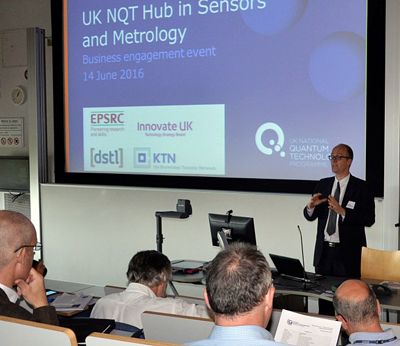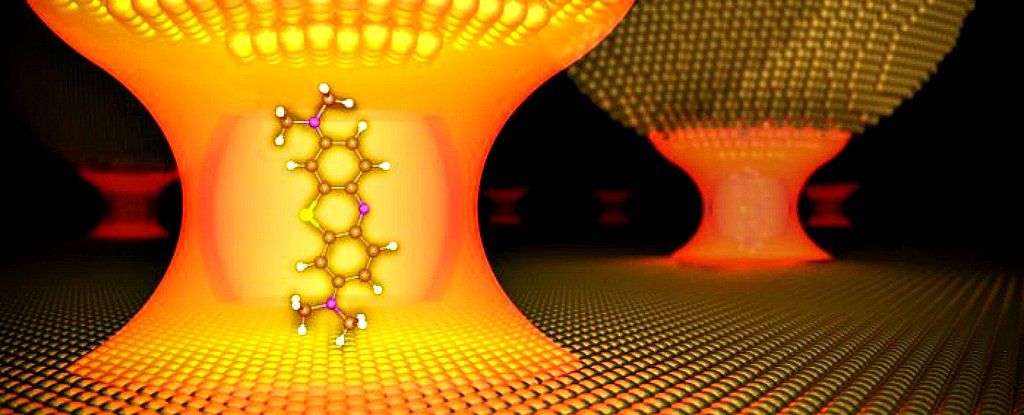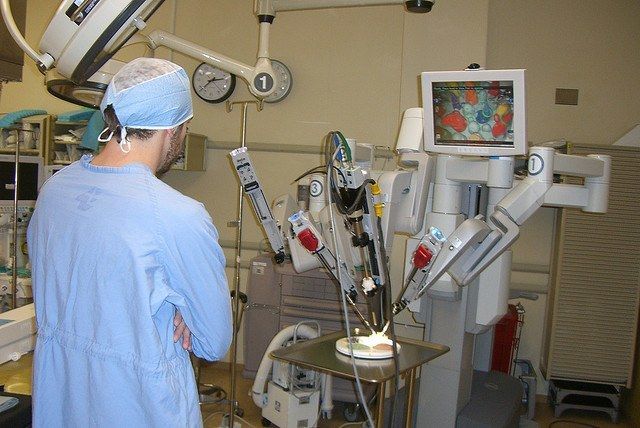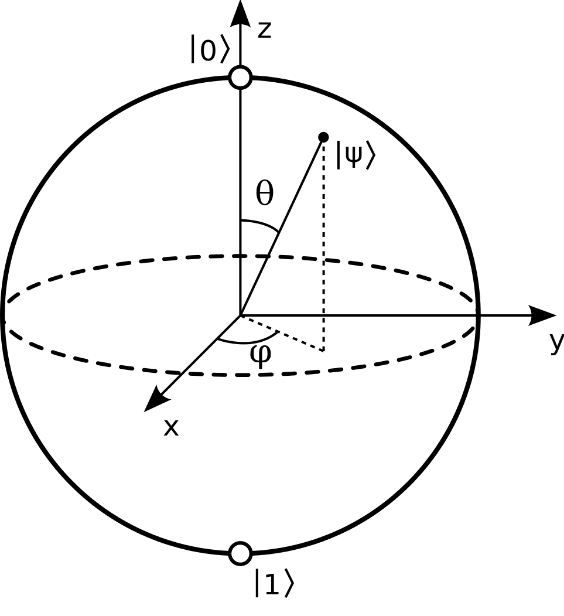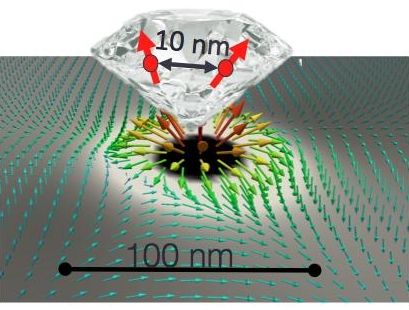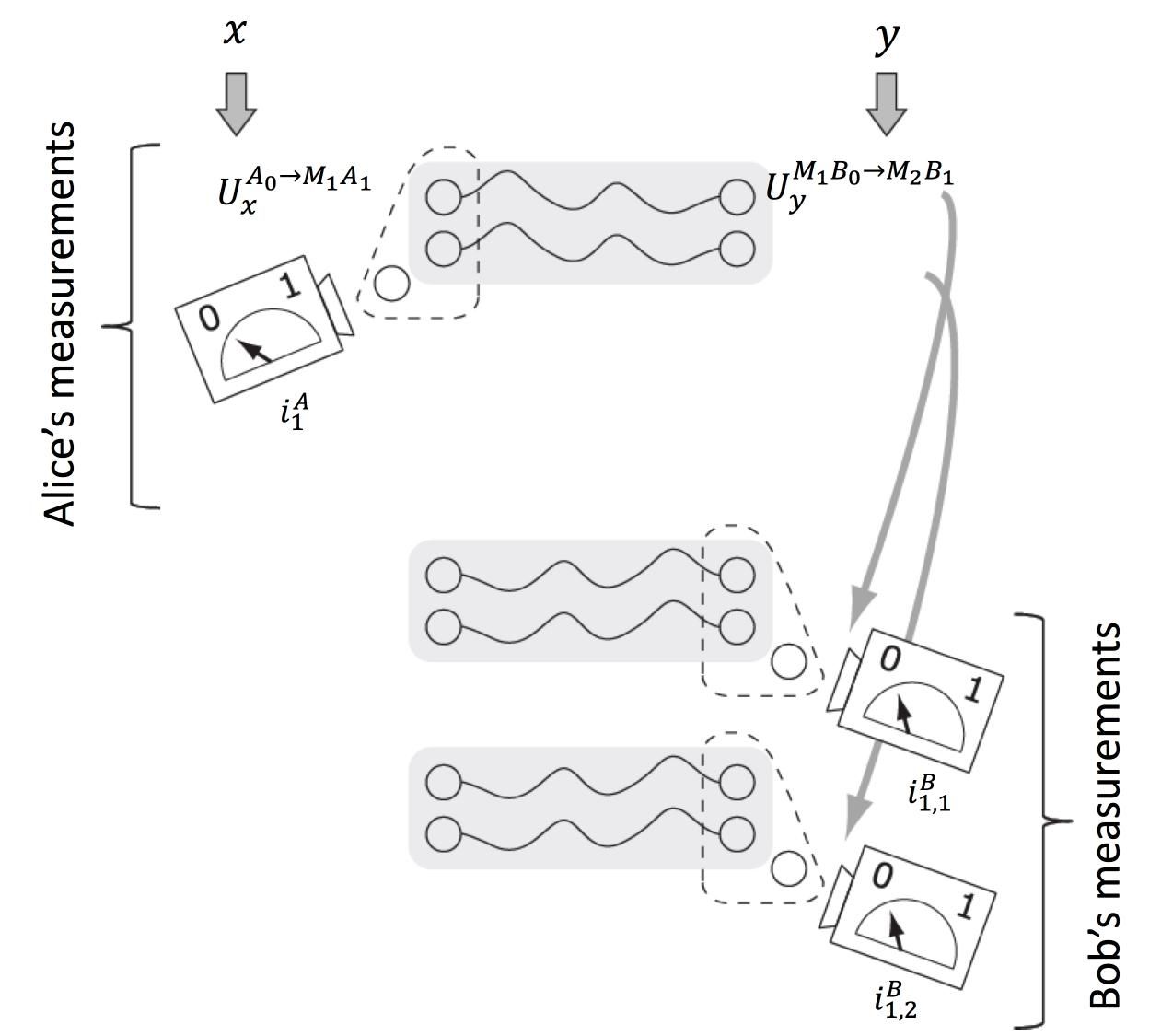Archive for the ‘quantum physics’ category: Page 794
Jun 16, 2016
Physicists Just Entangled 10 Photon Pairs And Set A New World Record
Posted by Shailesh Prasad in categories: particle physics, quantum physics
A team from the University of Science and Technology of China has shattered the quantum entanglement record, entangling 10 photon pairs.
Quantum entanglement is one of the strangest occurrences in the already strange world of quantum physics. Basically, entanglement is the state where quantum particles become so deeply linked that they share what is, in essence, the same existence.
The video below delves into the ins and outs of this phenomenon.
Continue reading “Physicists Just Entangled 10 Photon Pairs And Set A New World Record” »
Jun 15, 2016
Physicists have mixed matter and light at room temperature for the first time
Posted by Shailesh Prasad in categories: particle physics, quantum physics
In a lovely demonstration of light’s quantum effects, physicists in the UK have just mixed a molecule with light at room temperature for the first time ever.
Light and matter are usually separate, with totally distinct properties, but now scientists have trapped a particle of light — called a photon — with a molecule in a tiny, golden cage of mirrors.
That’s a big deal, because it creates a whole new way to manipulate the physical and chemical properties of matter, and could change the way we process quantum information.
Continue reading “Physicists have mixed matter and light at room temperature for the first time” »
Jun 15, 2016
8 Digital Health Jobs of the Future to Watch
Posted by Karen Hurst in categories: 3D printing, 4D printing, computing, drones, employment, health, information science, internet, quantum physics, robotics/AI
Agree. So as a tech engineer, futurist, innovator, leader you have 3 key tracks to remain relevant in the future: bio/ living technology, quantum, and a hybrid of living/ bio meets quantum computing.
Editor s Note: Richard van Hooijdonk is a futurist and international keynote speaker on future technologies and disruption and how these technologies change our everyday lives. Van Hooijdonk and his international team research mega trends on digital health, robotic surgery, drones, the internet-of-things, 3D/4D printing, Big Data and other how new technologies affects many industries.
With people living increasingly longer lives, medical care from surgeons, physicians, pharmacists and dentists will increase as well. And since the future of healthcare will look very different from what it is today, the medical field may just be the right industry for you, even if being a doctor or nurse is not your calling. Many new technologies will be incorporated into the healthcare industry and we will see things like robotic surgeries and 3D-printed organ implants, to name a few. This means we will be seeing a whole new host of career opportunities, even for jobs that don t actually exist yet.
Continue reading “8 Digital Health Jobs of the Future to Watch” »
Jun 15, 2016
Google and NSA Competing to Build World’s Most Powerful Quantum Computer
Posted by Karen Hurst in categories: computing, encryption, privacy, quantum physics, robotics/AI
Over the next 3 to 5 years you will see more and more in tech (medical/ bio, chip/ semiconductors, software, AI, services, platform, etc.) adopting QC in their nextgen products and services. We’re (as in Vern B. — D-Wave co-founder and CEO terms) in the Era of Quantum Computing. I highly urge techies to learn about QC so that you remain relevant.
Google is being driven by need to prevent the NSA from breaking into its system to access confidential personal data of its millions of users. On the other hand, the NSA is bent on cracking the tough encryption systems Google and other tech firms use to shield their information from them. Quantum computers will attain this aim for both Google and the NSA.
Google recently said it’s gotten closer to building a universal quantum computer. A team of Google researchers in California and Spain has built an experimental prototype of a quantum computer that can solve a wide range of problems and has the potential to be scaled up to larger systems.
Continue reading “Google and NSA Competing to Build World’s Most Powerful Quantum Computer” »
Jun 15, 2016
Android Creator Andy Rubin Bets Big On Quantum Computing And Smartphone AI
Posted by Karen Hurst in categories: computing, engineering, mobile phones, neuroscience, quantum physics, robotics/AI
Smart man.
Android creator Andy Rubin has several tricks up his sleeve. Rubin’s company Playground is currently tinkering with quantum computing and smartphone AI, and he believes that this combination could create a conscious intelligence that would underpin all of technology.

Continue reading “Android Creator Andy Rubin Bets Big On Quantum Computing And Smartphone AI” »
Jun 15, 2016
CWRU physicists deploy magnetic vortex to control electron spin
Posted by Karen Hurst in categories: quantum physics, supercomputing
More news on the using the magnetic vortex method to control electron spin.
Researchers at Case Western Reserve University have developed a way to swiftly and precisely control electron spins at room temperature.
The technology, described in Nature Communications, offers a possible alternative strategy for building quantum computers that are far faster and more powerful than today’s supercomputers.
Continue reading “CWRU physicists deploy magnetic vortex to control electron spin” »
Jun 14, 2016
Andy Rubin Sees AI and Quantum Computers as Next Big Thing
Posted by Karen Hurst in categories: computing, mobile phones, quantum physics, robotics/AI
More and more people are seeing the Quantum QC light.
(Bloomberg) — Andy Rubin, the Google veteran who built Android into the world?s largest mobile operating system, is convinced that artificial intelligence is the next big thing.
Jun 14, 2016
Android inventor Andy Rubin thinks the future of smartphones might be a single AI
Posted by Klaus Baldauf in categories: computing, mobile phones, quantum physics, robotics/AI
Andy Rubin, who co-founded Android and jump-started Google’s robotics efforts, imagines a future where artificial intelligence is so powerful that it powers every connected device. Speaking at Bloomberg’s Tech Conference in San Francisco today, Rubin said a combination of quantum computing and AI advancements could yield a conscious intelligence that would underpin every piece of technology. “If you have computing that is as powerful as this could be, you might only need one,” Rubin says. “It might not be something you carry around; it just has to be conscious.”
It sounds outlandish and theoretical, and it is. But Rubin, with his investment fund Playground Global, is investing in companies trying to make that kind of wondrous future a reality. One such company, a quantum computing firm Rubin would not name, is composed of researchers he thinks may one day commercialize quantum devices using standard manufacturing processes. Quantum computing promises exponential boosts in processing power, in part by harnessing the probabilistic nature inherent to the physics discipline.
Rubin thinks there’s substantial overlap coming down the line for quantum computing, AI, and robotics. “In order for AI to blossom and fulfill consumer needs, it has to be about data,” he says. “That’s where robotics come in — robots are walking mobile sensors, who can sense their environment and interact and learn from those interactions.” Furthermore, Rubin adds, both AI and quantum computing are good at pattern matching and could greatly complement one another. “Those two things combined in hundreds of years might get us to the point of this conundrum, who is the master and who is the servant and all that,” he says.
Jun 14, 2016
Quantum 1, classical 0: Bell nonlocality universally confirmed in any large communication complexity advantage
Posted by Karen Hurst in category: quantum physics
(Phys.org)—The relationship between communication complexity problems, Bell nonlocal correlations and the advantage of quantum over classical strategies has long been recognized, but has been confirmed in only two problems. Recently, however, scientists at University of Cambridge, University of Amsterdam, CWI, QuSoft, Gdansk University, Gdansk University of Technology, Adam Mickiewicz University, and Jagiellonian University employed a two-part method based on port-based teleportation – a scheme of quantum teleportation where a receiver has multiple (N) output ports and obtains the teleported state by merely selecting one of the N ports1,2. The researchers used the quantum protocol based on the given communication complexity game to construct a set of quantum measurements on a maximally entangled state to show that any large advantage over the best known classical strategy makes use of Bell nonlocal correlations. In so doing, the researchers assert, they have provided the missing link to the fundamental equivalence between Bell nonlocality and quantum advantage. Moreover, their results have significant implications for classical information processing and the development of more efficient teleportation protocols.
Dr. Sergii Strelchuk discussed the paper, “Quantum communication complexity advantage implies violation of a Bell inequality,” that he and his colleagues published in Proceedings of the National Academy of Sciences. Two of the challenges the scientists faced were encountered in demonstrating that any large advantage over the best known classical strategy makes use of Bell nonlocal correlations, and in providing the “missing link” (in the form of a general connection) between a large quantum advantage in communication complexity and Bell nonlocality. “One conceptual issue was finding a procedure that converts any quantum strategy for a given communication complexity problem into a set of correlations – that is, probability distributions corresponding to the measurement outcomes during the protocol,” Strelchuk tells Phys.org.
